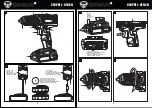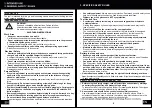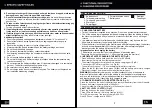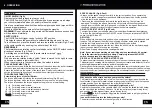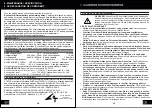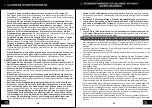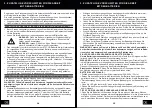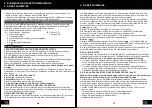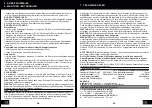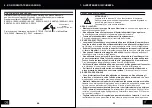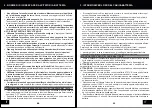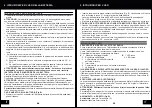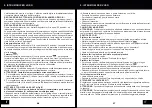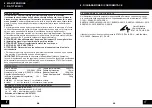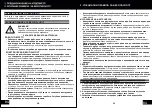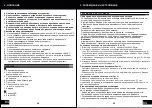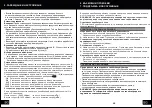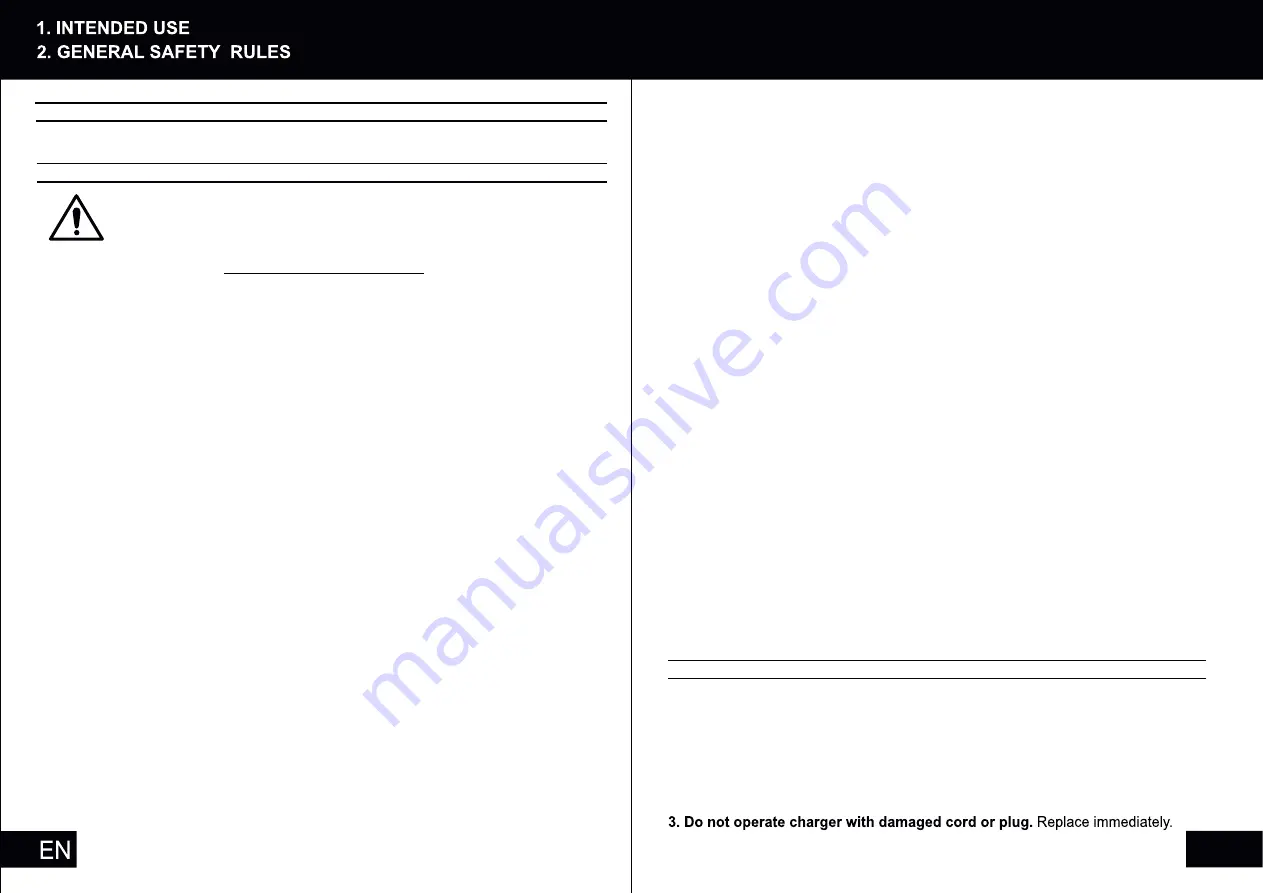
EN
INTENDED USE
The tool is intended for driving in and loosening screws as well as for drilling in wood,
metal, ceramic and plastic.
GENERAL SAFETY RULES
WARNING!
Read and understand all instructions. Failure to follow
all instructions listed below may result in electric shock,
fire and/or serious personal injury.
SAVE THESE INSTRUCTIONS
Work Area
• Keep your work area clean and well lit.
Cluttered benches and dark areas invite accidents.
• Do not operate power tools in explosive atmospheres such as in the presence
of flammable liquids, gases, or dust.
Power tools create sparks which may ignite the dust or fumes.
• Keep bystanders, children and visitors away while operating a power tool.
Distraction can cause you to lose control.
Electrical Safety
• A battery operated tool with integral batteries or a separate battery pack mist be
charged only with the specified charger for the battery.
A charger that may be suitable for one type of battery may create a risk of fire
when used with another battery.
• Do not expose power tools to rain or wet conditions.
Water entering a power tool will increase the risk of electric shock.
• Do not abuse the cord. Never use the cord to carry the charger. Keep cord away
from heat, oil, sharp edges or moving parts. Replace damaged cord immediately.
Damaged cords may create a fire.
Personal Safety
• Stay alert, watch what you are doing and use common sense when operating
a power tool. Do not use the tool while tired or under the influence of drugs,
alcohol or medication.
A moment of inattention while operating power tools may result in serious personal
injury
.
your hair, clothing and gloves away from the moving parts.
• Dress properly. Do not wear loose clothing or jewelry. Contain long hair. Keep
• Avoid accidental starting. Be sure switch is off before plugging in. Carrying tools
with your finger on the switch or plugging in tools that have the switch on will
invite accidents.
• Remove adjusting keys or switches before turning the tool on. A wrench or a key
that is left attached to a rotating part of the tool may result in personal injury.
• Do not overreach. Keep proper footing and balance at all times.
Proper footing and balance enables better control of the tool in unexpected situations.
• Use safety equipment.
Always wear eye protection. Dust mask, non-skid safety shoes,
hard hat or hearing protection must be used for appropriate conditions.
Ordinary eye or sun glasses are NOT eye protection.
Tool Use and Care
• Use clamps or other practical way to secure and support the workpiece to
a stable platform.
Holding the workpiece by hand or against your body is unstable and may lead to
loss of control.
• Do not force tool. Use the correct tool for your application.
The correct tool will do the job better and safer at the rate for which it is designed.
• Do not use tool if the switch can not turn on or off.
Any tool that cannot be
controlled with the switch is dangerous and must be repaired before use.
• Disconnect the plug from the power source before making any adjustments,
changing accessories, or storing the tool.
Such preventive safety measures reduce the risk of starting the tool accidentally.
• Store idle tools out of reach of children and other untrained persons.
Tools are dangerous in the hands of untrained users.
• Maintain tools with care. Keep cutting tools sharp and clean.
Properly maintained tools with sharp cutting edges are less likely to bind and are
easier to control.
Battery tool use and care
• Recharge only with the charger specified by the manufacturer.
A charter that is suitable for one type of battery pack may create a risk of fire when
used with another battery pack.
• Use power tools only with specifically designated battery packs.
Use of any other battery packs may create a risk of injury and fire.
• When battery pack is not in use, keep it away from other metal objects, lie pa-
perclips, coins, keys, nails, screws or other small metal objects, that can make
a connection from one terminal to another.
Shorting the battery terminals toge-
ther may cause burns or a fire.
• Under abusive conditions, liquid may be ejected from the battery; avoid con-
tact.
If contact accidentally occurs, flush with water. If liquid contacts eyes, additiona-
lly seek medical help.
SAFETY RULES FOR CHARGER AND BATTERY
1. Before using the battery charger, read all instructions and cautionary markings
on battery charger, battery, and product using battery.
To reduce the risk of injury, charge only lithium ion rechargeable batteries. Other types
of batteries may burst causing personal injury and damage.
2. An extension cord should not be used unless absolutely necessary.
Use of Improper extension cord could result in a risk of fire and electric shock. If
extension cord must be used, make sure: that pins on plug of extension cord are the
same number, size, and shape as those of plug on charger.
3. SPECIFIC SAFETY RULES
4
5
Summary of Contents for C16-2Li
Page 16: ...30 BG 31 BG 3 1 Li Ion 2 3...


